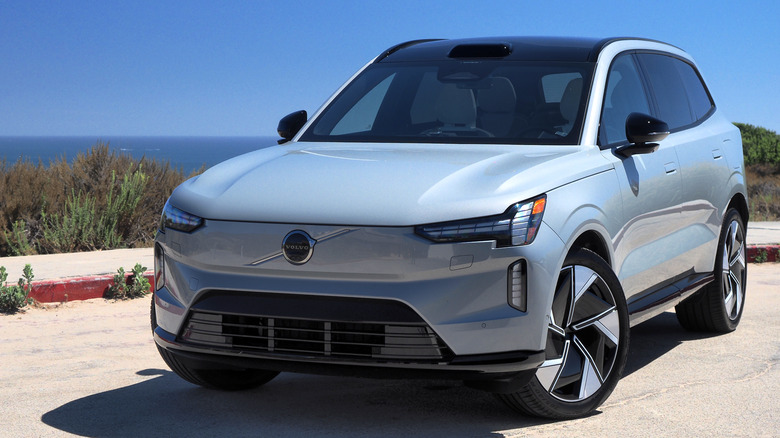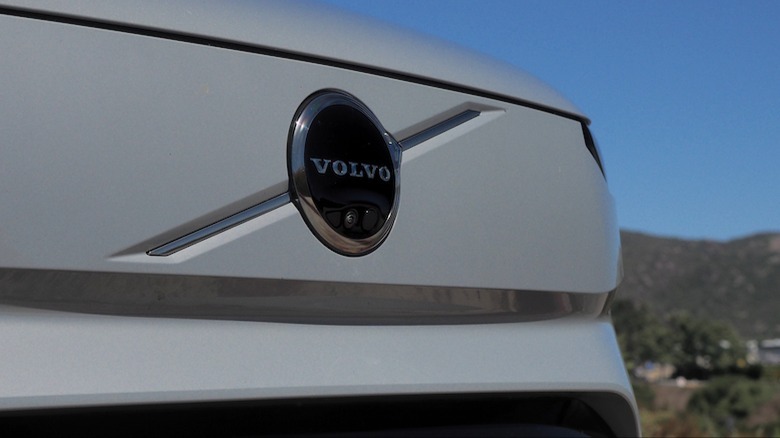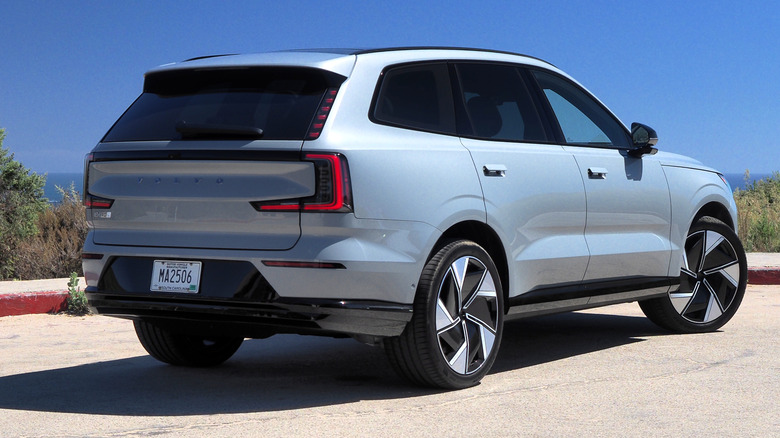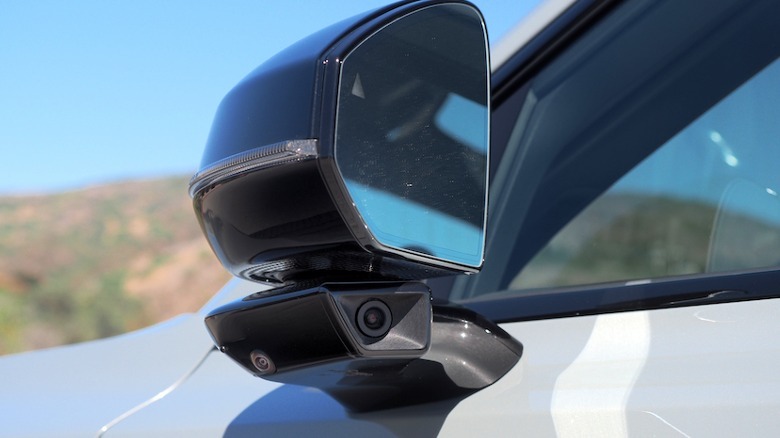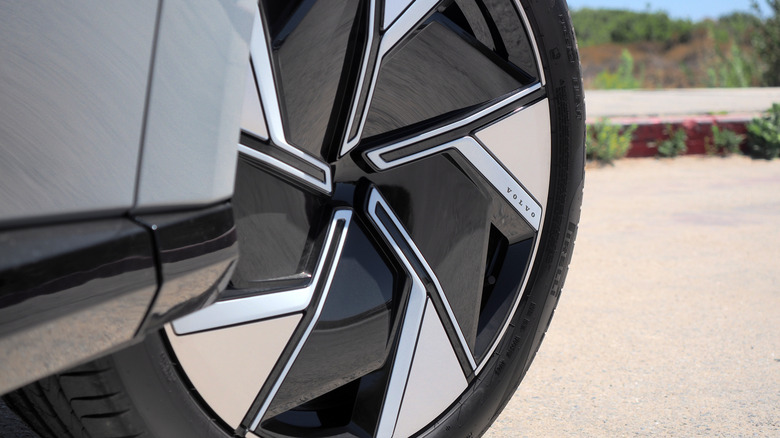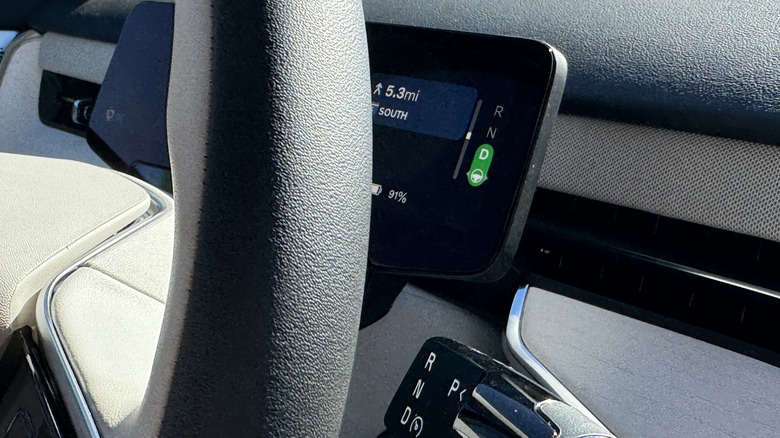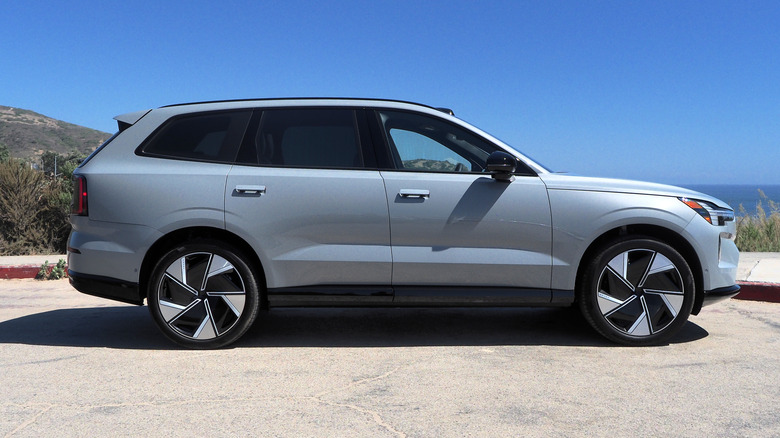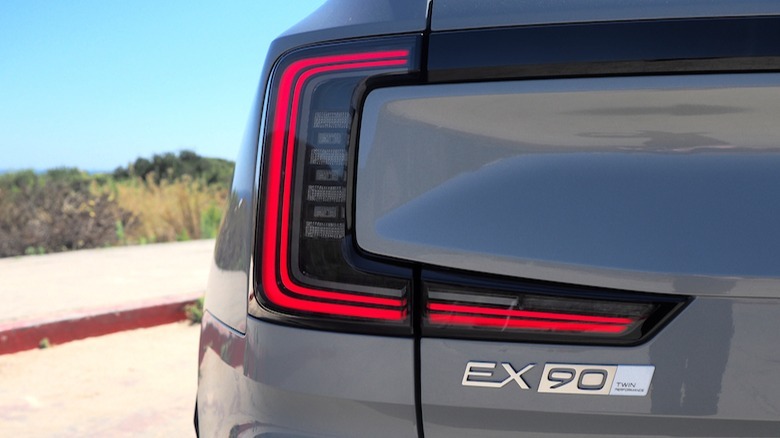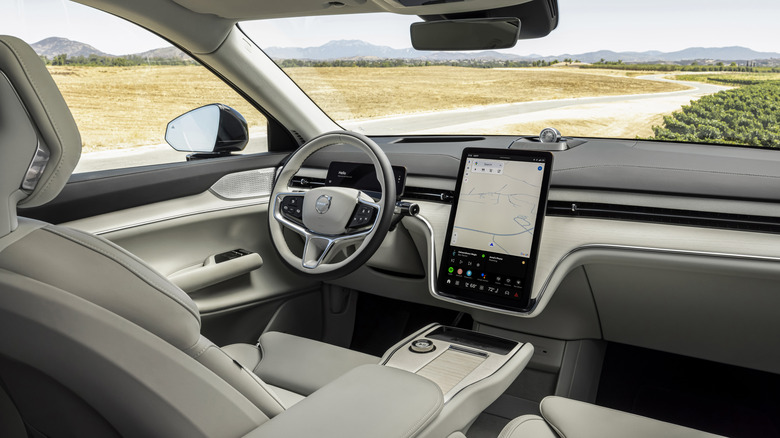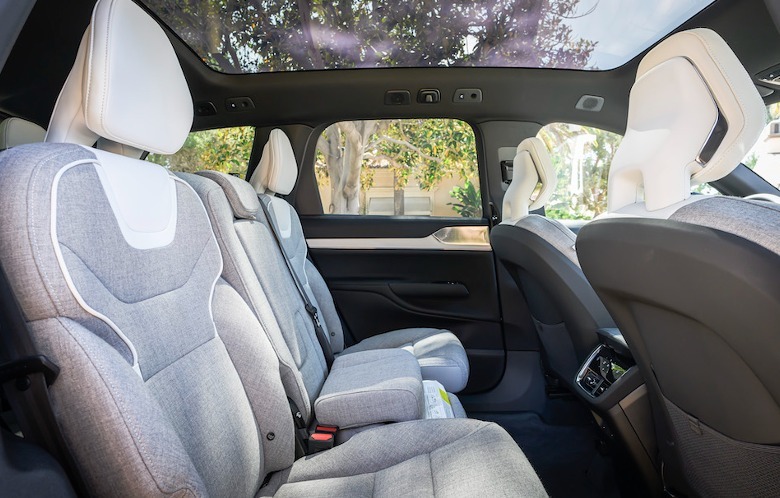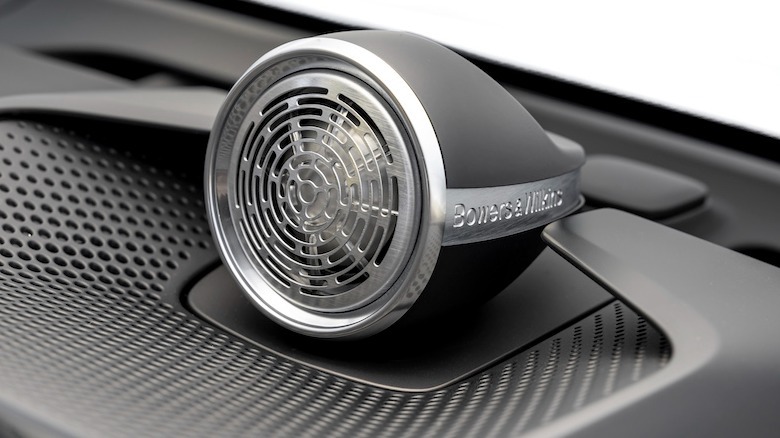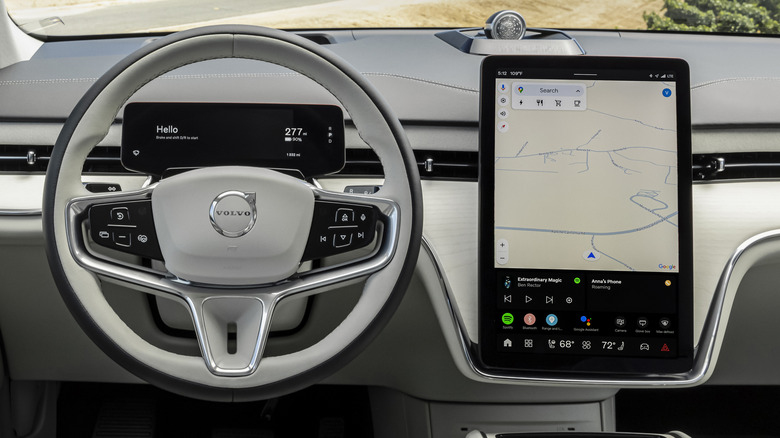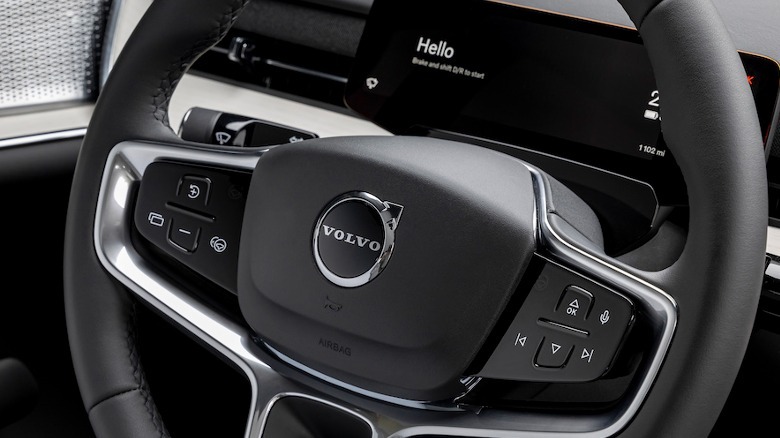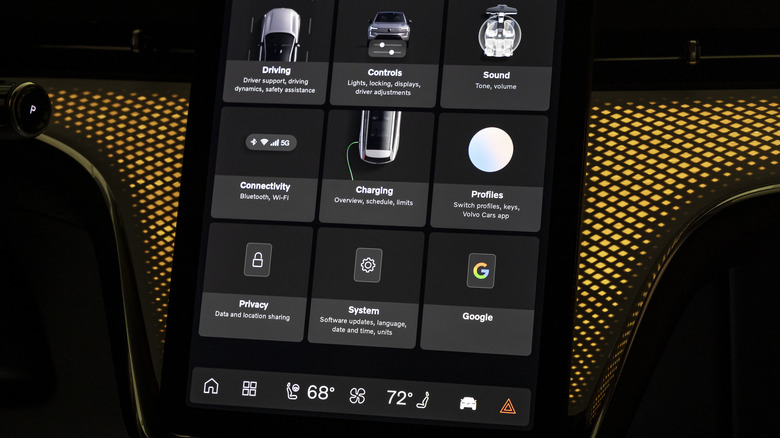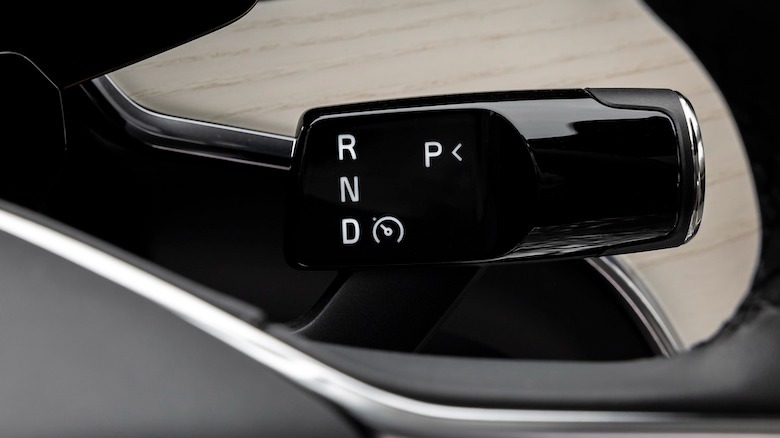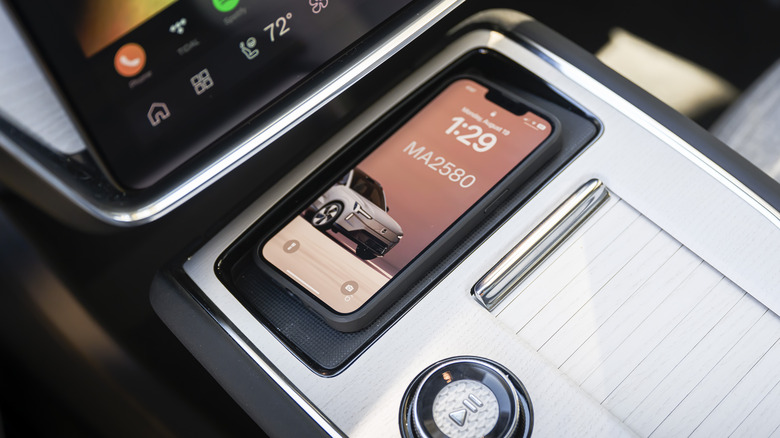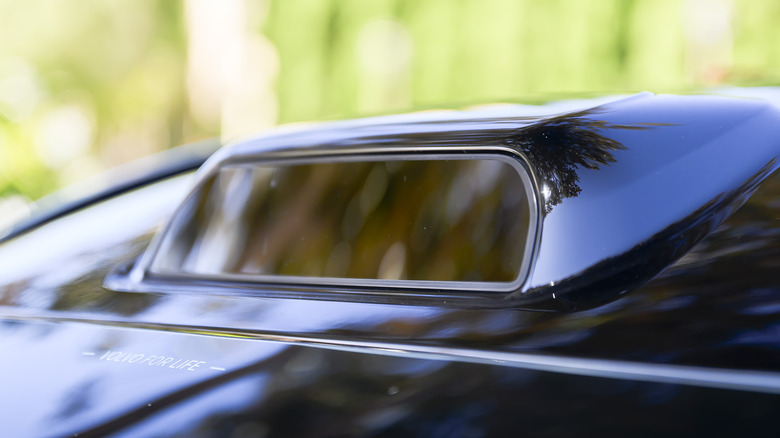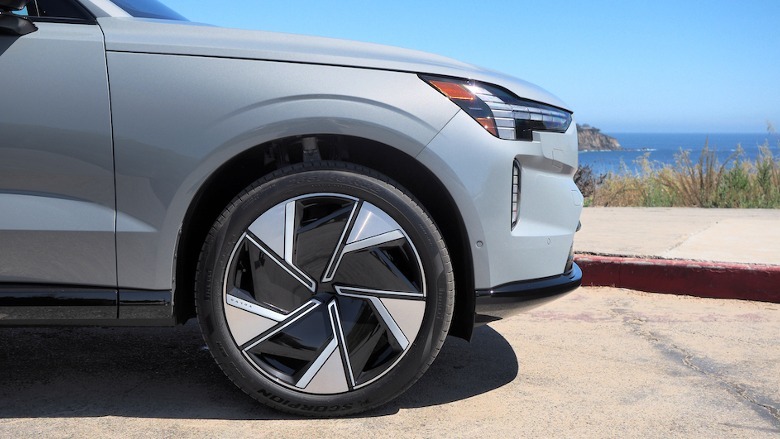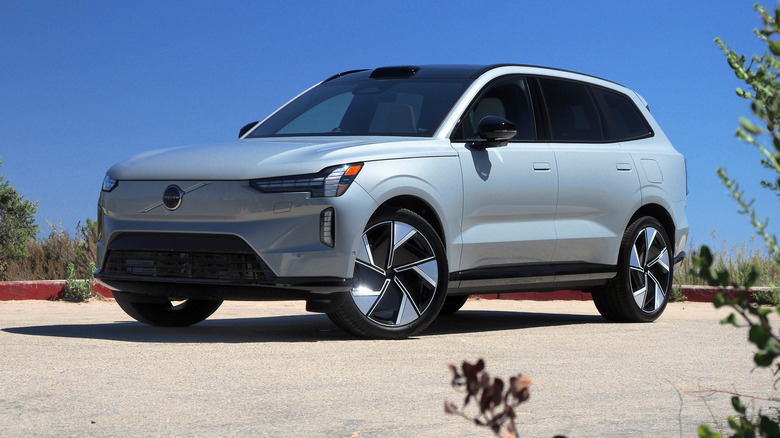2025 Volvo EX90 First Drive: Electric Luxury Gambles On The Future
It was about a decade ago when a three-row SUV rebooted Volvo's fortunes, and now the automaker is hoping that the 2025 EX90 will cement its future in the electric age. Though only spiritually — not mechanically — connected with the XC90, the new EV aims to repeat its successes: not only in sales, but in convincing a new generation of potential owners that Volvo is neither staid, nor boring.
It's not Volvo's first all-electric model — there's the EX30, and before that the C40 and XC40 Recharge — but the EX90 is undeniably the most important. Priced from $79,995 (plus destination), it also has a narrowing opportunity gap, with three-row electric SUVs still in relatively short supply.
Volvo hasn't strayed too far from the familiar aesthetic of the XC90, not a bad thing given how well that SUV has aged. As with the XC30, it's a smoother, tauter design with a greater nod to aerodynamics, and punctuated with more obvious tech. The pixel headlamps — which gape like blinking eyes to reveal the full projection LEDs — and pop-out door handles are the most notable examples, though the stacked lighting on either side of the tailgate glass is a fresh update to a traditional Volvo flourish.
The EX90 looks good, even with its odd bulges
The result is handsome, if a little odd from some angles. Those taillamp clusters leave the EX90 looking a little narrow from the rear, for instance, though it's the technology which is usually to blame. The bulge of the LIDAR sensor atop the windshield, for example, looking like the Volvo has been bumped on the forehead, and the multi-camera cluster slung beneath each side mirror.
The Plus trim gets 20-inch wheels as standard, with 21 and 22-inch wheels optional. The Ultra trim (a $4,350 upgrade) switches to a 21-inch standard wheel, with 22-inches optional. Pop the power tailgate, and there's 10.9 cubic-feet of storage (including a 2.2 cu-ft underfloor bin) with all three rows up; that expands to 23.1 cu-ft with the third row folded, and 67.6 cu-ft with the second row down, too. A small frunk offers 1.2 cu-ft more.
There'll be two versions of the EX90 at launch, both twin-motor configurations for all-wheel drive, and each with a 111 kWh battery (of which 107 kWh is usable). The 2025 EX90 Twin Motor will have 402 horsepower and 568 lb-ft of torque, and be capable of 0-60 mph in an estimated 5.7 seconds. For $5,000 more, the EX90 Twin Motor Performance will be software-fettled for 510 horsepower and 671 lb-ft of torque, trimming the 0-60 time to 4.7 seconds.
Fast enough, but comfort is king
That's fast, though perhaps not as fast as you might think given the power numbers. Then again, the EX90 weighs close to 6,000 pounds, configuration-depending. It surges ahead with that familiar electric shove of instant torque, whether or not you have the sport-like Performance AWD mode (which permanently engages both motors) switched on.
One pedal regen is smooth and predictable in its "High" setting; you can also switch it off, or set it to "Auto" where the level promises to adjust according to conditions. That left the pedal less predictable than I preferred, especially since in "High," the blend between regen and physical brakes was so good.
On the snaking test route in California, where Volvo hosted SlashGear to test the EX90, the big electric SUV's performance in the corners was about what you'd expect from, well, a big electric SUV. Better, certainly, than a lot of gas SUVs of similar three-row scale, thanks to the low center of gravity and the air suspension — standard on the Ultra trim, along with Volvo's active chassis — keeps things level, even if the firmest of the two settings is still pretty supple. All the same, this is not a sporting SUV (not that it pretends to be).
Volvo's driving assistance tech is conservative
Better, then, to enjoy the sweeping corners that the EX90 sails imperiously around, generally doing an excellent job of avoiding getting unsettled by potholes. How much of that is the Euro-spec 22-inch Summer tires on Volvo's test fleet remains to be seen. The U.S. will get all-season rubber, and that could make a notable difference on American roads.
On the highway, it's a beguilingly-hushed cruiser: Volvo claims the EV has its quietest cabin ever, in part down to the laminated side and rear windows that are standard on the Ultra (the Plus only gets tempered side windows). Click the right column stalk all the way down, and Pilot Assist enables; a hands-on Level 2 system with adaptive cruise and lane-centering.
It works well, if a little conservative in operation, but when you roam onto certain stretches of pre-mapped highway there's also Lane Change Assist. A little arrow — arguably far too small, frankly — on the driver display shows when it's available, the EX90 spotting a clear adjacent lane. Hit the turn signal all the way, and (as long as your hands are still on the wheel) the SUV will change lane for you. It's all very slick, though far from the talents of, say, GM Super Cruise — which lets you take your hands off the wheel and will automatically shift lanes to bypass slower traffic ahead.
EX90 range hinges on wheel size
Honestly, I'm not sure anybody needs the extra power that the Twin Motor Performance version brings. Volvo didn't have examples of the standard EX90 on-hand to compare, nor cars without air suspension. There is, at least, no sacrifice when it comes to range. With range, wheel size makes the biggest difference: the EPA says the EX90 on 20 or 22-inch rims will manage up to 300 miles, while 21-inch wheels could nudge that up to 310 miles.
Given the non-U.S.-spec tires and the fact that I was hardly driving with great restraint, the 38 kWh/100 miles (or around 2.6 miles/kWh) that the EX90 Twin Motor Performance Ultra on 22-inch wheels reported should undoubtedly be taken with a pinch of salt. Still, that would work out to around 278 miles total, which doesn't seem bad considering Volvo's top level estimates.
As for filling up the battery, expect 11+ hours on a Level 2 home charger. At DC fast chargers, the EX90's 250 kW support means 10-80% could take 30 minutes. Both versions of the SUV have a 4,850 pound tow rating — slightly lower than the 5,000 pounds maximum of an XC90 PHEV.
Spacious cabin feels properly special
The U.S. will get six and seven-seat configurations of EX90, the former with a pair of captain's chairs in the second row for an extra $500. As with the XC90, the first and second rows are spacious; the third is more kid-scale, headroom feeling snug for my 5' 8" frame. A standard panoramic glass roof helps keep it feeling airy, though while UV tinted, there's no retractable shade. The automaker will sell you a more fiddly, removable shade for $245.
Volvo will offer four interior schemes in total. Plus and Ultra have a choice of Nordico faux-leather in charcoal, charcoal/cardamom brown, and dawn cream-white, each with contrasting dash inlays. Ultra can also be had with Volvo's lovely wool blend upholstery, a mix of welfare-certified real wool and recycled polyester. Sadly, only Nordico seats can be had with ventilation (heating is standard for the front and rear outboard seats), not wool, and the $850 option won't be available in production until later in the 2025 model year.
Altogether, it's a pleasing evolution of what we've seen in previous Volvo SUV cabins. The floating center armrest up front — with a wireless charging pad on top and a sizable storage area underneath — links visually with the sizable 14.5-inch center touchscreen. Four-zone climate control is standard, as is a 9-inch driver display and a head-up display. A 14-speaker Bose audio system can be swapped for a 25-speaker Bowers & Wilkins system with 1,610W and Dolby Atmos surround sound support. The power front seats are controlled with a surprisingly intuitive little squircle-shaped knob on the side; the Ultra trim also adds massage functions.
Second-gen Android infotainment is mostly a win
The EX90 runs the second-generation of Volvo's Android Automotive OS infotainment, and frankly, it looks much more cohesive than the old version. A persistent bar across the bottom handles climate control and access to apps and settings. The Google Assistant does voice control, while the Google Play store provides a (still fairly limited) selection of third-party software. Above that bar, on the left are recently-accessed apps, while the right shows context-specific shortcuts.
At low speed, for instance, the parking camera button might be placed there; at higher speed, the one-pedal driving button could replace it. Above that are widgets for phone and multimedia, and finally the upper portion is dedicated to a sizable Google Maps view. It — and the driver display — looks crisper and tidier than the earlier Volvo UI, and while physical controls are in the minority, at least there's a dedicated volume knob and play/pause button.
Volvo, sadly, hasn't proved immune to all of the over-complications many new EVs seem to assume are necessary. The driver must toggle between controlling the front and rear windows with a button, so that the EX90 can avoid two more switches; the side mirrors and wheel are software-adjusted through the touchscreen and the steering wheel buttons, rather than with traditional switchgear.
Does Volvo know best?
The automaker insists that owners won't care — and settings will be saved to individual driver profiles, automatically restored depending on who approaches the car. However, as with other too-gimmicky-for-their-own-good EVs, it turns the sort of minor adjustments we often do on the move without really thinking about them, into a distracting dig through the various settings pages. There is, at least, a shift stalk to switch between drive, park, and reverse, and another physical stalk for lights and wipers.
It's not the only example of Volvo assuming it knows best, for better or worse. While "Performance AWD" mode and brake regen levels get dedicated on-screen buttons on the EX90's contextually-organized touchscreen, adjusting the suspension or steering feel sends you two levels deep through the car's settings, and then a further tap to reveal otherwise hidden options.
At least those options are there: Volvo has done away with driver-adjustable distance in its Pilot Assist hands-on adaptive cruise control, the system deciding on an appropriate gap according to road conditions. Just like the 112 mph locked-down top speed — and the comprehensive standard safety tech suite including a 360-degree camera, blind spot warnings, collision avoidance and mitigation, and auto-park — buying an EX90 means accepting that Volvo Knows Best.
Convenience features that weren't always convenient
The omissions, complexities, and ostensibly-needless "simplification" efforts are all justified, Volvo claims, in that they make living with the EX90 easier and more harmonious. It's not the only automaker to have glitchy tech hoist such promises by their own petard. The electric SUV didn't lock me out completely (I'm looking at you, Lucid), but the digital key system — which uses Ultra-Wideband (UWB) on your smartphone to regale you with a light display from about 33 feet away, then unlock the EX90 at around 10 feet — wasn't as consistent as a regular key fob (which Volvo will sell separately, as a cost-option).
On several occasions, that meant dipping into the iPhone's Wallet to find the backup NFC key, tapping in a PIN code first, and then touching the phone to the door handle to unlock the car, as well as punching in the PIN a second time to start it. Now, these are early EX90 examples, and software is typically the last thing to be finalized before customer deliveries begin. Still, I'd completely understand if you opted to wait it out a little, and make sure Volvo smooths through the glitches. That way you can also join the line for ventilated seats, too, which honestly feels like table-stakes for an SUV in this segment.
Volvo's much-vaunted LIDAR won't be useful at first
It's a reminder that Volvo needs time to actually make use of all its fancy hardware. The LIDAR — supplied by Luminar, which Volvo has a stake in — will, eventually, give the EX90 the sort of front-facing range-finding vision that cameras and radar can only dream of. LIDAR is, with Tesla being the most notable exception, generally acknowledged as being an essential component in the overall sensor suite that autonomous vehicles will demand.
At launch, though, it's doing nothing of note on the EX90 (and that's not the only omission: Apple CarPlay will also have to be added later, along with bidirectional power). Eventually, Volvo execs tell me, it'll provide a useful safety net for unexpected objects in the roadway, able to spot them from afar when a driver cannot. Or, theoretically at least, allow the EX90 to take driving responsibility from the human at the wheel, at least in certain conditions.
Such talents are a blend of hardware and software, however. While Volvo deserves credit for ensuring the hardware is present (it also added redundant braking and steering systems, also with eventual autonomous driving in mind), it's not clear when the software will arrive. Certainly not when we're talking about the sort of advanced driver-assistance (or outright replacement) that the automaker promised back in 2015 that it would assume legal responsibility for.
Buying an EX90 because of what its LIDAR might one day do, then, is about as sensible a new car strategy as buying a Tesla to run a robotaxi side-hustle. Though, to be fair to Volvo, I'd expect the EX90 to start using its advanced sensors a lot sooner than any Model Y turning into a true autonomous car.
2025 Volvo EX90 Verdict
Judged on what it offers today, there's a whole lot to like about the 2025 EX90. It's as refined and as pleasant to drive as we've come to expect from EVs, isn't lacking technology and toys, and has some of that Volvo personality, too. The sweet spot may very well be the EX90 Twin Motor Ultra (from $84,345 plus destination); though not the most powerful (you don't need it to be), it has the full compliment of gadgets and, of course, that compliant air suspension. Lease deals are probably your best bet, too: That way, you'll get the U.S. EV incentive, which the EX90 isn't eligible for on outright sales.
Three-row EVs are, of course, in relatively short supply. The Kia EV9 lacks the luxe of the Volvo, though is cheaper. A Rivian R1S starts slightly cheaper than the EX90, though with less range. Mercedes' EQS SUV offers a snug third-row option, but its price tag is in the six figures. If you don't really need those rearmost seats, meanwhile, the 2025 Polestar 3 shares a platform with the EX90 — but has more power and more aggressive driving dynamics.
Overall, the EX90 does an excellent job of translating much of what made the XC90 a perennial success into the fully-electric age. It's stylish, refined, and about as fun as it needs to be for the Volvo badge. Now all the automaker needs to do is deliver the next-gen tech talents its EV's hardware promises is possible.
